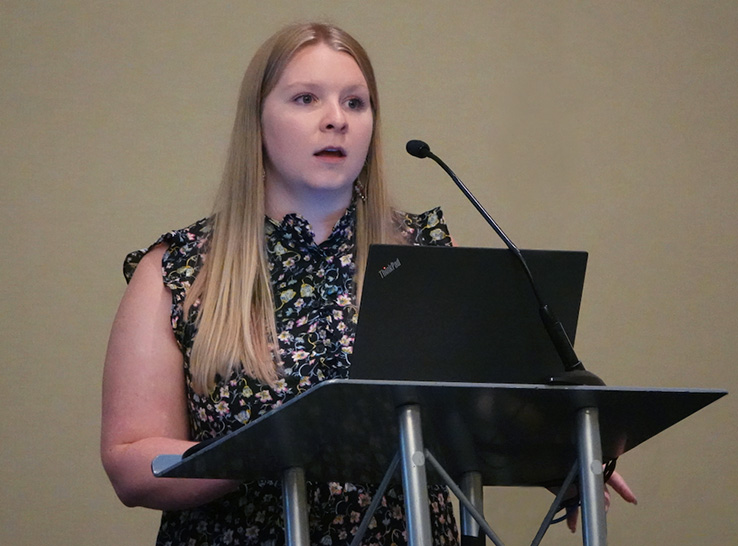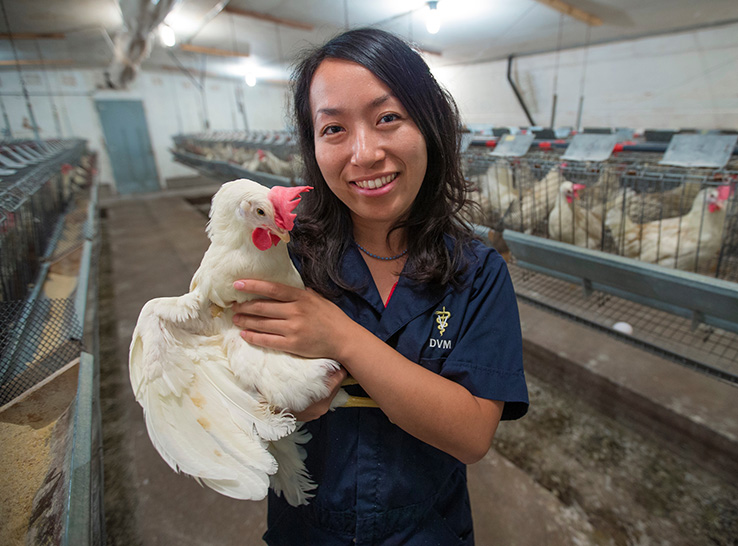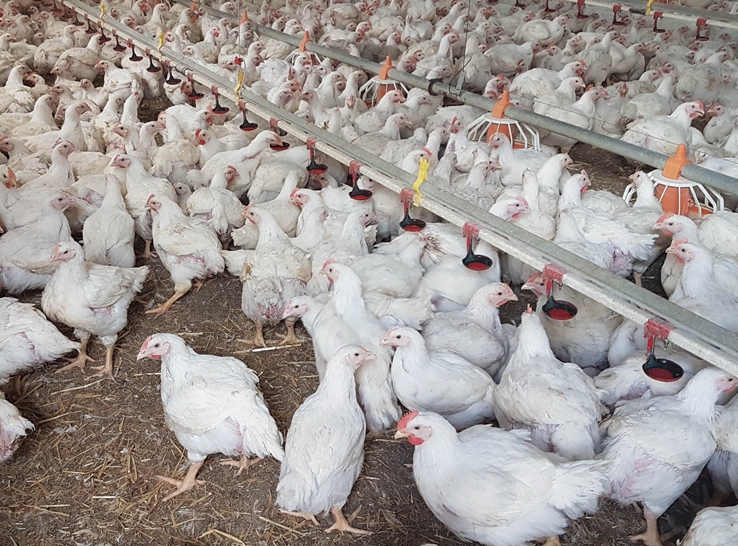By Catherine Fudge
Graduate research assistant, poultry science
University of Georgia
Histomoniasis, colloquially referred to as blackhead disease, is caused by the protozoal parasite Histomonas meleagridis. The devastation this single-celled organism can cause to a turkey flock with an outbreak of histomoniasis can be staggering.
Clinical signs of this disease include lethargy, drooping head and wings, feed refusal and sulfur-yellow droppings. This disease acts quickly, can be spread between birds and results in mortality within 10 to 14 days. In a severe outbreak, a grower may experience up to 100% mortality in a 3- to 4-week period. Even for some mild cases, the mortality from histomoniasis can be more than 15%.
In the US, Histomonas first reared its ugly head in the late 1800s, but the turkey industry was severely unprepared. By the early 1900s, histomoniasis had wiped out nearly 6 million turkeys, threatening the very survival of the turkey industry.
In the 1960s, major breakthroughs were made and treatments were discovered, but this unfortunately led to a standstill in H. meleagridis-related research. From the 1990s to the 2010s, treatments for histomoniasis slowly began to be withdrawn from the market. In 2016, the final drug available for preventing histomoniasis was removed, and suddenly, the turkey industry was back at square one regarding the disease.
Unveiling the unknown
Since then, the turkey industry has been without any effective means of controlling histomoniasis. Thankfully, research has picked back up although researchers quickly discovered how little was known about H. meleagridis. The task at hand has been to unveil the unknown. It has been my good fortune to work with a group of scientists determined to conquer seemingly unsolvable problems.
My passion for poultry and parasitology started when I joined a research lab at North Carolina State University as an undergraduate and continued as I worked toward my master’s degree. My research was on the impact of lateral transmission and the development of histomoniasis in turkey poults.
Stressors and histomoniasis
My colleagues and I spent time in the field with turkey farmers throughout Virginia, West Virginia, Arkansas and Missouri to find out what producers saw in the field. The information we gathered was vital and helped lead to applicable, science-backed research the industry could use to help prevent histomoniasis in their flocks.
For example, we published our findings about stressors associated with more severe outbreaks of histomoniasis characterized by higher infection rates and higher lesion scores in the liver and ceca. These include low-density diets, an 18-hour feed withdrawal post-infection and coccidiosis.
Route of infection
The route of infection was another focus of our research. For many years, it was thought that H. meleagridis spreads when birds take up H. meleagridis via the cloaca and that the pathogen then travels from the large intestine to the ceca. Past research on the oral infection route had concluded it was not feasible because H. meleagridis can’t survive acidic environments; the upper intestine of birds, namely the crop and proventriculus, have a low pH, which is far too acidic for H. meleagridis survival.
Looking through this work, we noticed that no studies we could find had attempted infections using cecal droppings, which is the medium in which H. meleagridis is shed into the environment. Furthermore, turkeys have a natural affinity for consumption of cecal droppings.
Combining these ideas together, we administered cecal content containing H. meleagridis to birds and had 90% infection rates. Understanding the route of infection is an important first step for designing possible interventions, such as treatments that may be able to stop H. meleagridis in the upper intestines before colonizing the ceca or reducing the oral intake of infectious materials (litters, feces, etc.). Our findings, which we published, were exciting for our lab and have also opened the door for further research aimed at studying the fecal-oral route of transmission.
Looking to the future
As I work on my PhD at the University of Georgia, my research has shifted toward histomoniasis in broiler breeders. Although the disease was first recognized as one that mostly affects turkeys, reports of histomoniasis outbreaks in broiler breeder pullets are on the rise. There has also been a dearth of research in this area.
Our studies to date provide a solid backdrop as we address and attempt to resolve current problems with histomoniasis in broiler breeders, and any new findings should benefit the turkey industry as well.
H. meleagridis remains largely an enigma, but ultimately, we hope to discover ways to reduce or eradicate this pathogen in the environment and prevent and control histomoniasis in commercial poultry.
Reference
Fudge C, Wedegaertner O, Cupo K, Sigmon C, Beckstead R, Edens F, Chen C. Role of stressors in histomoniasis transmission and development in turkeys. J App Poult Res. 2024;33(2). https://doi.org/10.1016/j.japr.2024.100405







